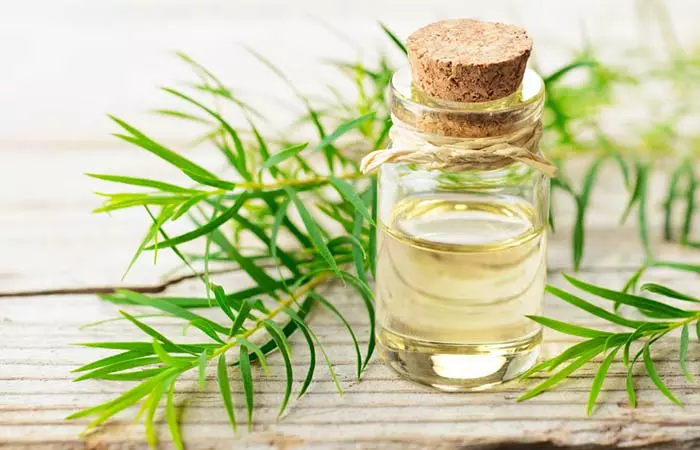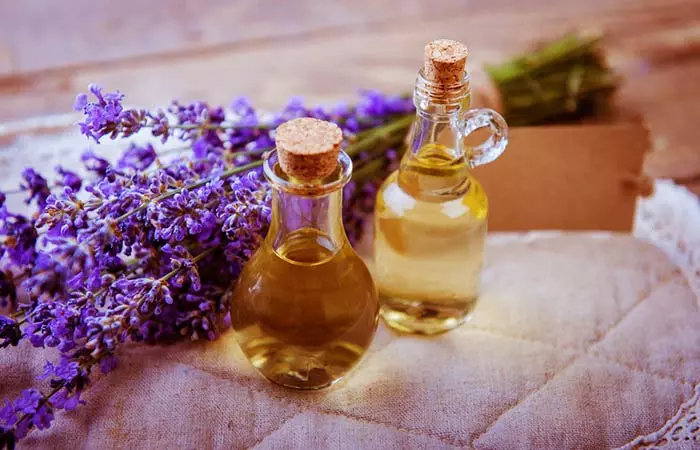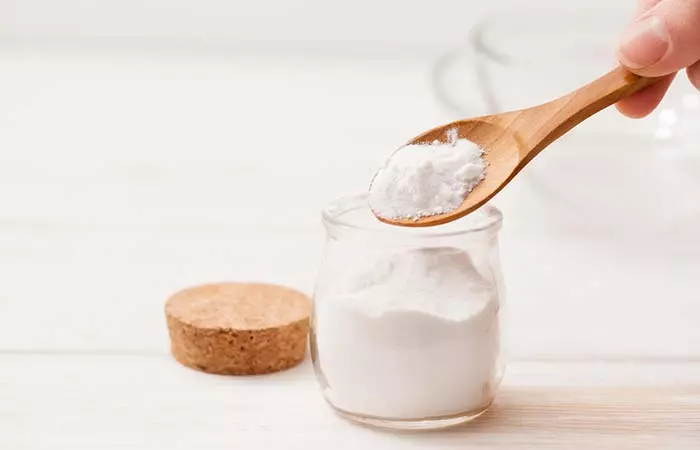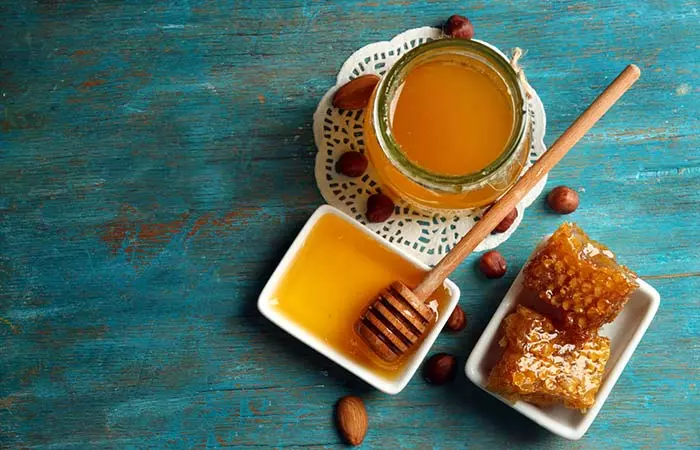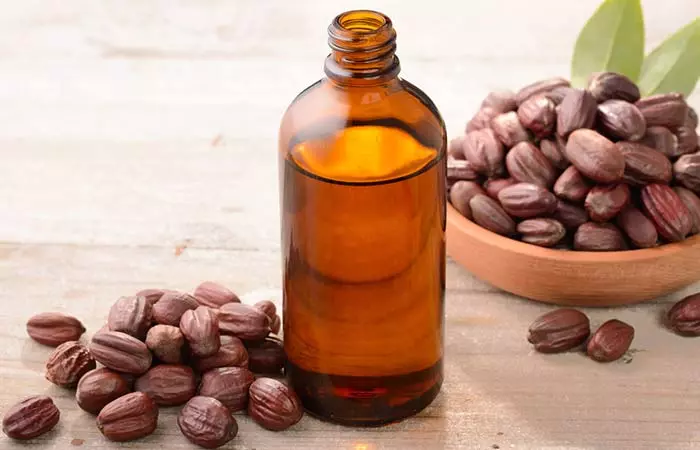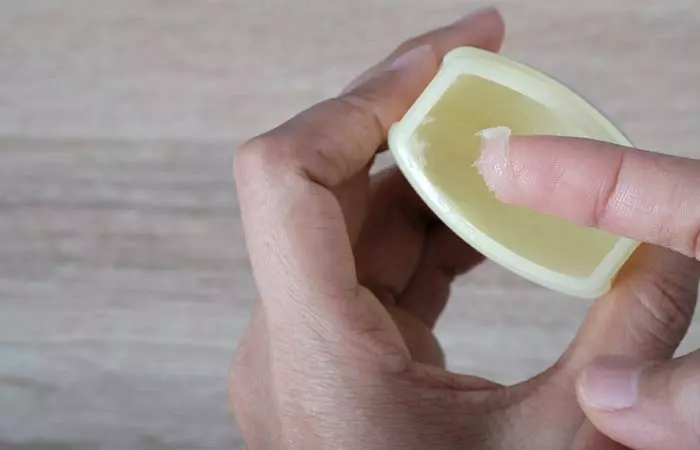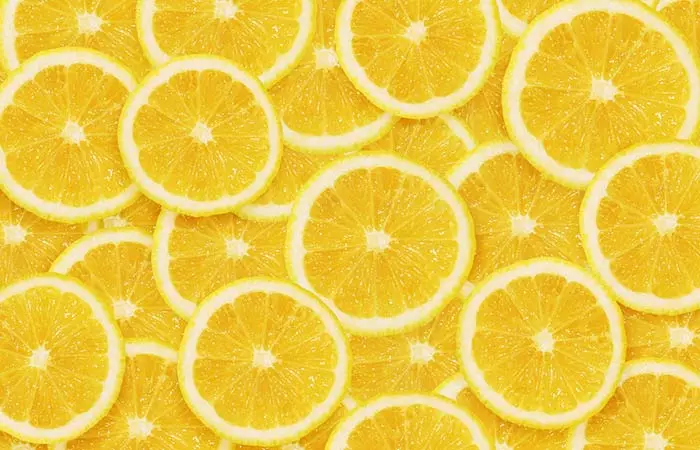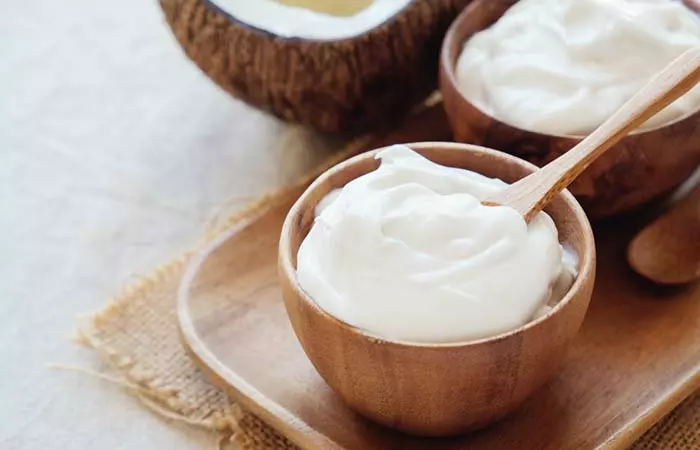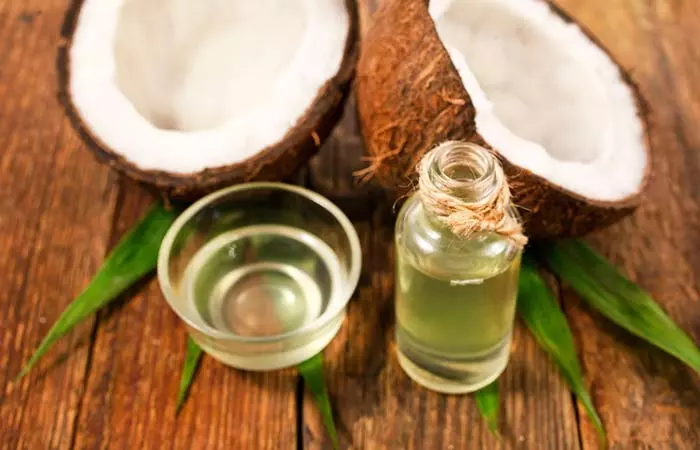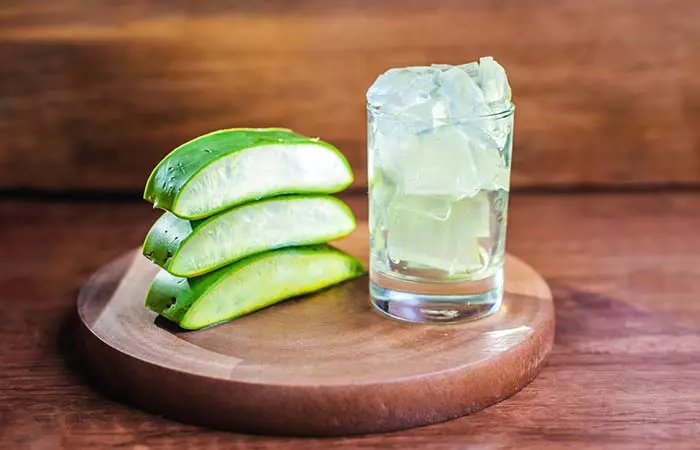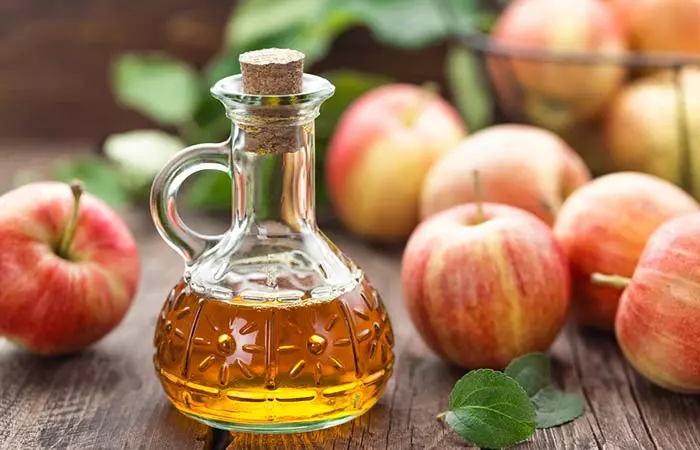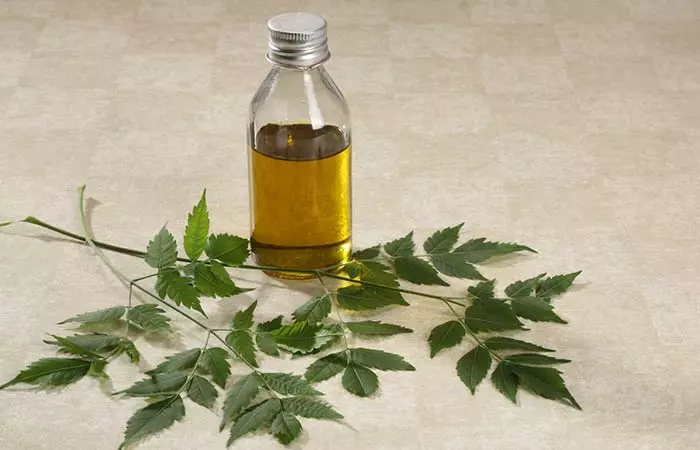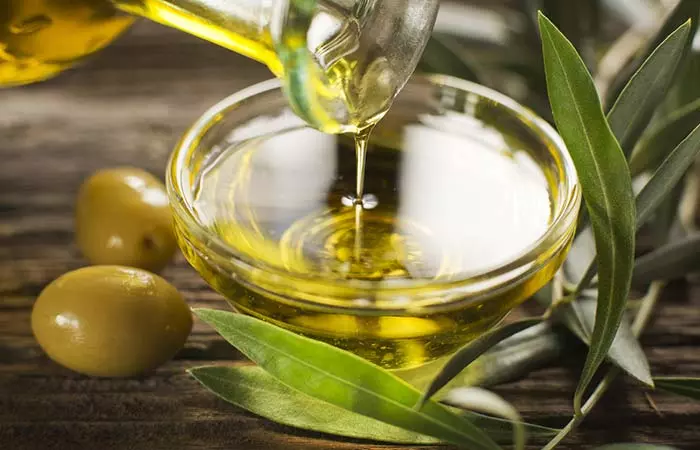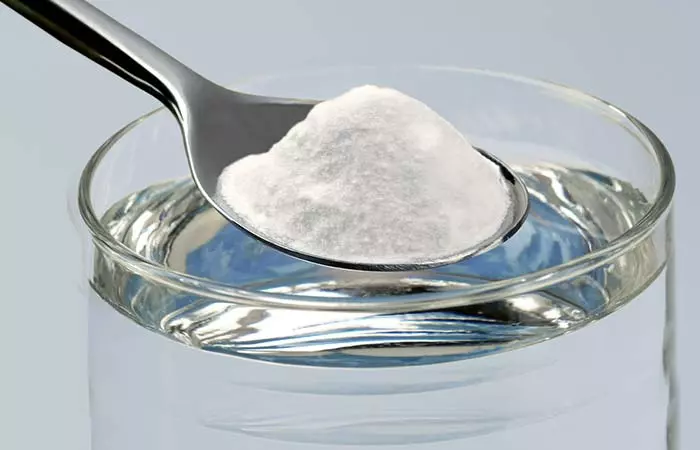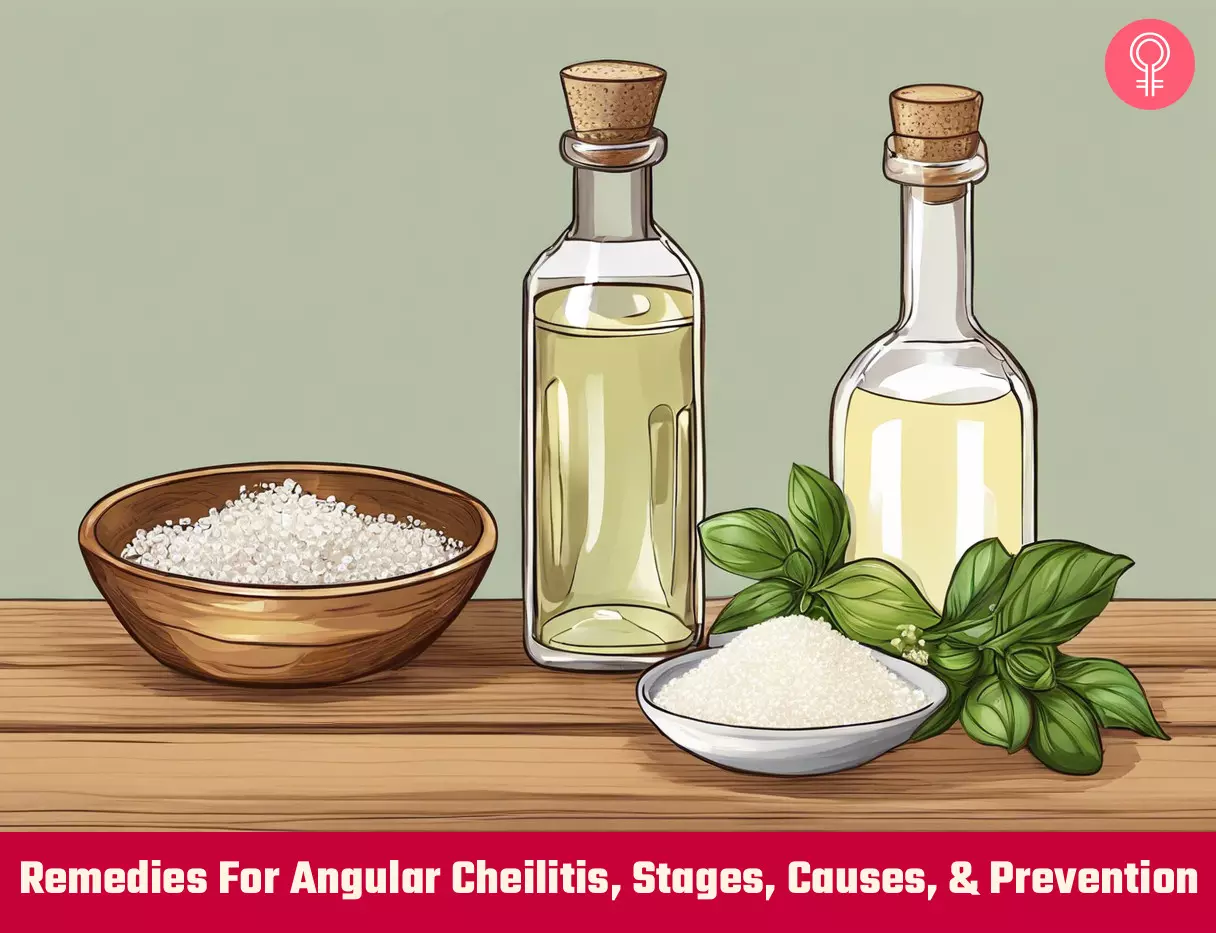Home Remedies To Treat Angular Cheilitis
1. Essential Oils
a. Tea Tree Oil
2-3 drops of tea tree oil 2 teaspoons of coconut oil Cotton ball
Tea tree oil possesses antifungal properties that can help eliminate fungal growth, while its anti-inflammatory properties reduce the inflammation and pain that may surface with angular cheilitis (3).
b. Lavender Oil
2-3 drops of lavender oil 2 teaspoons of coconut oil Cotton ball
Lavender oil exhibits antifungal activities that help in combating angular cheilitis easily (4). This essential oil is also anti-inflammatory and analgesici Substances that can help in relieving all kinds of pain without changing the ability to sense your surroundings or alter consciousness. and can provide relief from inflammation and itchiness (5).
2. Baking Soda
1 tablespoon of baking soda Water A clean cloth Moisturizer
Baking soda has natural antiseptic properties that can help in eliminating fungal and bacterial infections like angular cheilitis (6).
3. Garlic
2 minced garlic cloves Moisturizer
Garlic contains a compound called allicin that exhibits antifungal activity (7). The topical application of garlic is great for treating angular cheilitis as well as the itching and inflammation associated with it (8).
4. Honey
1 teaspoon of honey Honey is a great remedy for angular cheilitis due to its antifungal and antiseptic properties (9).
5. Jojoba Oil
A few drops of jojoba oil Jojoba oil is highly moisturizing and can protect your lips from drying and chapping and inflammation (10).
6. Petroleum Jelly (Vaseline)
Petroleum jelly (as required) The powerful emollient activities of petroleum jelly can help in keeping the affected area moisturized. This helps in speeding up the healing of angular cheilitis (11). Jane, a travel blogger, shared her experience about contracting angular cheilitis in her personal blog. She said, “I get cold sore looking things at the corners of my mouth. They start to heal at night. Then in the morning or when you open your mouth at all, they crack and bleed = infection starts and spreads out (i).” She mentioned that she had to be really diligent with moisturizing, especially when she was out in the cold.
7. Lemon
½ lemon 1 glass of water Honey (as required)
Drinking lemon juice 2 to 3 times following the onset of angular cheilitis can help you recover faster from it. The presence of vitamin C in lemon makes it a natural immunity booster that helps in healing your condition (12).
8. Yogurt
1-2 teaspoons of plain yogurt Probiotic yogurt is made up of live cultures that are beneficial in the treatment of angular cheilitis upon topical application as well as consumption. It helps in getting rid of inflammation and keeps your skin moisturized (13).
9. Coconut Oil
1-2 teaspoons of cold-pressed coconut oil Coconut oil exhibits two significant properties with respect to the treatment of angular cheilitis. One, its antifungal nature that can fight the fungal growth on your mouth, and two, its moisturizing nature that prevents further damage to your lips (14), (15).
10. Aloe Vera
1-2 teaspoons of freshly extracted aloe vera gel Aloe vera gel is quite popular for its healing nature. It helps in soothing irritated skin and prevents further infection with its natural antifungal activities (16).
11. Apple Cider Vinegar
1 tablespoon of apple cider vinegar ¾ cup of water Cotton balls
Apple cider vinegar exhibits powerful antibacterial and antifungal activities, both of which are great for eliminating the pathogens responsible for causing angular cheilitis. The anti-inflammatory nature of ACV soothes your irritated skin (15).
12. Neem Oil
2-3 drops of neem oil Neem oil is quite useful for treating skin conditions like angular cheilitis owing to its antifungal activities. It also soothes the inflammation and pain that usually accompany this fungal condition (17).
13. Olive Oil
1 teaspoon of cold pressed olive oil Olive oil is another wonderful option for treating your condition. It moisturizes the affected area, fights fungal infections, and also soothes inflammation (18), (19).
14. Salt Water
½ teaspoon of salt ¾ cup of slightly warm water A clean washcloth or cotton balls
Although this remedy might burn initially, it is worth a try. The natural antiseptic properties of salt can help reduce the infection and prevent it from progressing. If these remedies don’t work or you see no improvement in your condition, consult a dermatologist for treatment. Dr. Anna Chacon says, “Your doctor may prescribe topical antifungals such as clotrimazole, nystatin, or econazole. They may also add topical steroidsi A class of biologically active organic compounds that are used to quickly reduce inflammation in the body. , such as Mycostatin, triamcinolone, iodoquinol, or hydrocortisone. Always consult your dermatologist before deciding on a treatment or medication.” While these home remedies may provide temporary relief, understanding the condition may help you with better management. So, learn more about angular cheilitis in the next section. Scroll down.
What Is Angular Cheilitis?
Angular cheilitis is a medical condition that causes red, inflamed patches on any or both the corners of your mouth where your upper and lower lips meet. It is also referred to as perleche and angular stomatitis. A study conducted on 2426 participants with Sjogren syndrome (an autoimmune disorder characterized by dry mouth) found that the prevalence of angular cheilitis ranged from 2% to 81%, with the largest population reporting frequency of 20-40%. Additionally, a dry mouth caused by Sjogren syndrome, radiation treatment, certain medications, and vitamin A toxicity caused by overconsumption is said to be responsible for 5% of all cases of angular cheilitis. Dr. Anna Chacon, MD, FAAD, says, “Angular cheilitis usually isn’t serious. The condition often goes away about two weeks after starting treatment. Severe angular cheilitis can result in scarring or weak, thin skin if it isn’t treated. Also, it can come back after treatment.” Angular cheilitis usually progresses in four stages – and they are discussed below.
Stages And Symptoms Of Angular Cheilitis
The four stages and the associated symptoms of angular cheilitis are:
Stage 1 – Minor Angular Cheilitis
In the first stage of angular cheilitis, you will notice:
Slight flakiness in the corners of your mouth A tightness in the corners of your mouth that is accompanied by discomfort when you try and open your mouth
Stage 2 – Mild Angular Cheilitis
You may observe redness on the corners of your mouth and a slight increase in the discomfort.
Stage 3 – Severe Angular Cheilitis
Even simple activities like opening your mouth in any way become painful. Other symptoms of Stage 3 include the appearance of evident lesionsi An abnormal growth or change in the appearance of the skin due to clogged follicles, acne, or due to some kind of trauma to the skin. and soreness at the corners of your mouth. Treatments become ineffective in stage 3 of angular cheilitis.
Stage 4 – Chronic Angular Cheilitis
Once angular cheilitis becomes chronic, you will notice it disappearing and reappearing frequently. The skin around the corners of your lips may:
Become dry Crack or fissures Pain
If you are wondering what causes this troublesome ailment, scroll down to find out.
Causes And Risk Factors For Angular Cheilitis
There is always a probability for saliva to get trapped in the corners of your lips and build up. When it dries, the skin in that area is at risk of cracking. As a reflex, you may lick your lips to soothe the irritation. Repetitive exposure to saliva can cause an accumulation of moisture and warmth in the corners of your mouth, creating the perfect condition for fungal growth and infections. As this condition is not infectious, it is completely safe to kiss. But, Dr. Angela Casey, Board-Certified Dermatologist, cautions, “Kissing may exacerbate symptoms as the increased saliva and friction around the mouth can feed into the inflammation and skin cracking that is seen in angular cheilitis.” The major cause of angular cheilitis is a fungal infection caused by Candida fungus. Certain bacteria strains can also cause this infection. In case your doctor is unable to detect the cause of your condition, the infection is referred to as idiopathic angular cheilitis. There are also some factors that can increase your risk of developing angular cheilitis. They are:
Having braces Wearing dentures Licking your lips often Having crooked teeth Sagging skin around your mouth from aging or weight loss Sucking your thumb Smoking Eczema on the lips or lip dermatitis
In addition to these, nutritional deficiencies may also cause angular cheilitis. The following section explains how they are related to this condition.
Do Nutritional Deficiencies Cause Angular Cheilitis?
Angular cheilitis is often associated with a deficiency in riboflavin (vitamin B2) (1). Riboflavin is crucial for maintaining the structural integrity of the skin. Lack of this vitamin may lead to painful cracking and inflammation at the corners of the mouth. Anecdotal evidence suggests that niacin (vitamin B3) deficiency, which may occur due to genetic disorders, may also cause skin problems. Anemia is often caused by iron deficiency and may lead to dry, cracked skin (1). A deficiency in zinc can hinder the skin’s ability to heal. Due to this, treatment for conditions such as angular cheilitis often includes supplements to address the deficiency (2).
Most often, people get confused between angular cheilitis and a cold sore. To put your confusion to rest, the following section reveals a few major differences between the two.
Angular Cheilitis Vs. Cold Sore
Angular Cheilitis
It appears without a forewarning. It usually appears as one large blister. It does not cause other symptoms, like fever or a headache, like cold sores. It usually occurs around the corners of your mouth.
Cold Sores
They occur in a cycle, and before their onset, you may feel a tingling or burning sensation in the affected area. They are often caused by the herpes simplex virus (HSV). They occur in tiny clusters. These sores may also cause other symptoms like fever, headache, or swollen lymph nodes. They can occur anywhere around your mouth.
Given how unsightly angular cheilitis can end up looking, it is best if you avail angular cheilitis treatments quickly before the infection turns chronic. The following are some amazing natural remedies that can help you tackle angular cheilitis overnight.
Prevention Tips
Follow a healthy diet that boosts your immune system and avoid eating junk food. Protect your lips from pollution and direct exposure to the sun and rain. Stay hydrated by drinking enough water. Sleep well. Maintain good oral hygiene. Reduce the use of cosmetics on your lips. Always apply sunscreen. Keep your lips moisturized and exfoliated. These two are some of the most important lip care tips to follow, but you can also apply cold compresses if your lips are extremely chapped and swollen.
How long does it take for angular cheilitis to heal? If you do not avail treatment on time, angular cheilitis can take anywhere between a couple of weeks to even a few months to heal completely. What cream to use for angular cheilitis? A combination of antibacterial and antifungal topical treatments is often recommended medically for the treatment of angular cheilitis. Viaderm is one such ointment. Is it good to put Vaseline on your lips? Yes, it is a great idea to use Vaseline on the lips for treating dry and chapped lips as it has exceptional emollient properties. What vitamin deficiency causes angular cheilitis? Deficiencies in B vitamins like B2 (riboflavin) and iron cause angular cheilitis. Is angular cheilitis contagious? Fortunately, angular cheilitis is not contagious. Although it may spread to the other corner of your lips, it cannot spread to other body parts or other individuals. Is angular cheilitis an STD? No, angular cheilitis is a common skin condition and not an STD. Can dehydration cause angular cheilitis? Yes, dehydration can cause dry mouth and cracked corners that may lead to angular cheilitis. Can toothpaste cause angular cheilitis? Yes, allergic contact cheilitis may be caused due to allergies due to different toothpaste ingredients. What are the medications for angular cheilitis? Your doctor may prescribe oral antibiotics or antifungals medications to help treat angular cheilitis.
Illustration: Remedies For Angular Cheilitis Stages Causes & Prevention
Check out the video below get all answers to your questions about the causes and treatments of angular cheilitis. Learn what to do to prevent and treat this common condition in this helpful video. i. Angular Cheilitis = Awfulnesshttps://flyingmonkeytravels.blogspot.com/2012/11/angular-chelitis-awfulness.html
